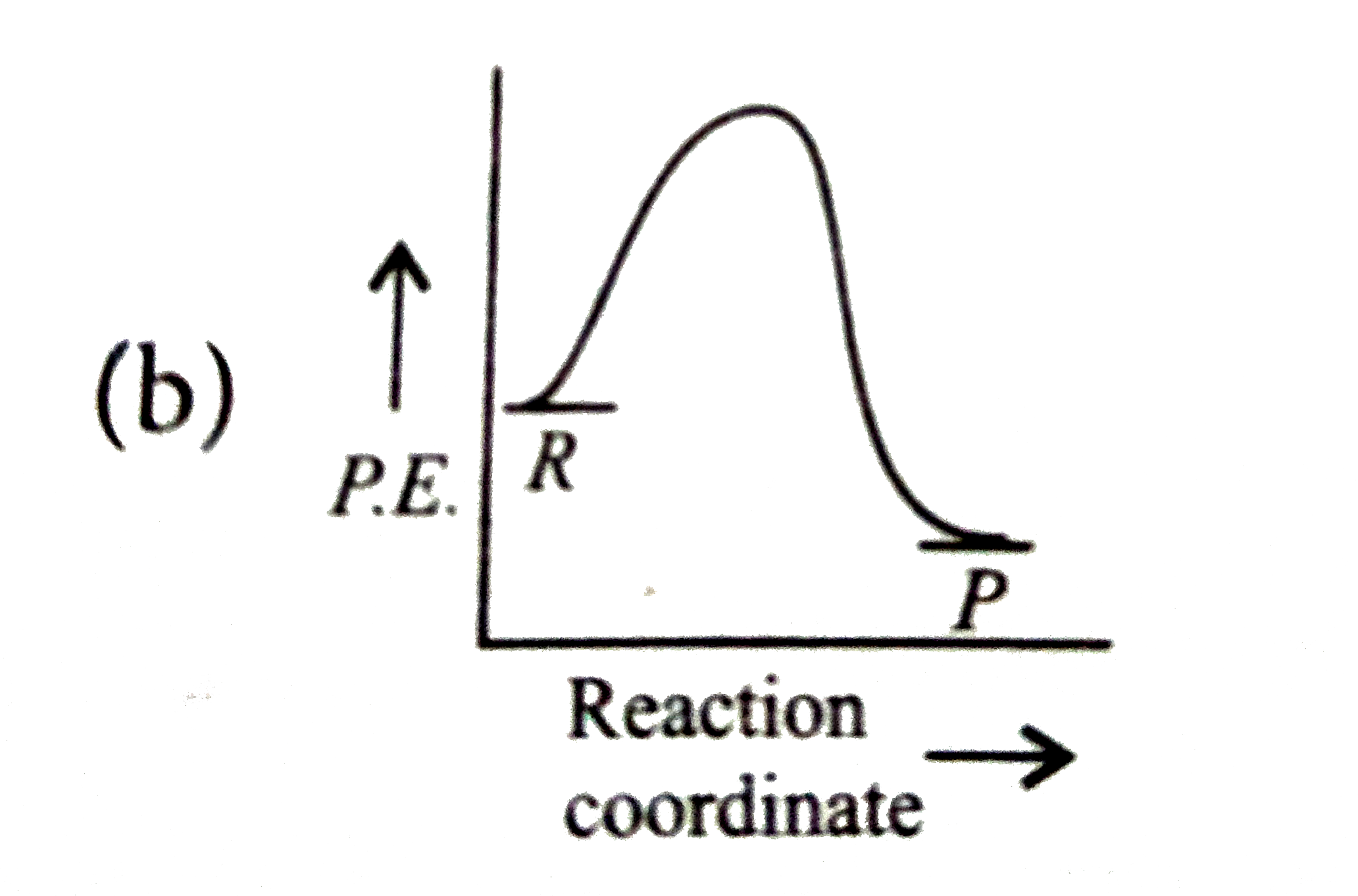For an endothermic reaction, where ΔH represents the enthalpy of reaction in kJmol−1, the minimum value for the energy of activation will be
Less the zero
equal to ΔH
less than ΔH
more than ΔH
The correct Answer is:D
To find the minimum value for the energy of activation (Ea) for an endothermic reaction, we can follow these steps:
Step 1: Understand the nature of endothermic reactions
In an endothermic reaction, the enthalpy change (ΔH) is positive. This means that the energy of the products is higher than that of the reactants.
Step 2: Visualize the energy profile
Draw an energy versus reaction coordinate diagram. In this diagram:
- The reactants are at a lower energy level.
- The products are at a higher energy level.
- The difference in energy between the reactants and products is ΔH.
Step 3: Identify activation energy
In the energy profile:
- The activation energy (Ea) for the forward reaction is the energy required to reach the transition state from the reactants.
- The activation energy for the backward reaction is the energy required to reach the transition state from the products.
Step 4: Relate ΔH and activation energies
The relationship between the activation energies and ΔH can be expressed as:
ΔH=Ea(forward)−Ea(backward)
This means that the activation energy for the forward reaction is greater than ΔH because the reactants need to overcome the energy barrier to reach the products.
Step 5: Conclude the minimum value of activation energy
Since the activation energy for the forward reaction must be greater than the enthalpy change (ΔH) for an endothermic reaction, we can conclude:
Ea(forward)>ΔH
Thus, the minimum value for the energy of activation will be greater than ΔH.
Final Answer
The minimum value for the energy of activation (Ea) for an endothermic reaction is greater than ΔH.
---
In an endothermic reaction, the enthalpy change (ΔH) is positive. This means that the energy of the products is higher than that of the reactants.
Draw an energy versus reaction coordinate diagram. In this diagram:
- The reactants are at a lower energy level.
- The products are at a higher energy level.
- The difference in energy between the reactants and products is ΔH.
In the energy profile:
- The activation energy (Ea) for the forward reaction is the energy required to reach the transition state from the reactants.
- The activation energy for the backward reaction is the energy required to reach the transition state from the products.
The relationship between the activation energies and ΔH can be expressed as:
ΔH=Ea(forward)−Ea(backward)
This means that the activation energy for the forward reaction is greater than ΔH because the reactants need to overcome the energy barrier to reach the products.
Since the activation energy for the forward reaction must be greater than the enthalpy change (ΔH) for an endothermic reaction, we can conclude:
Ea(forward)>ΔH
Thus, the minimum value for the energy of activation will be greater than ΔH.
The minimum value for the energy of activation (Ea) for an endothermic reaction is greater than ΔH.
Topper's Solved these Questions
- CHEMICAL KINETICSBOOK - NCERT FINGERTPS ENGLISHCHAPTER - CHEMICAL KINETICSEXERCISE - Higher Order Thinking Skills
9 Videos
- CHEMICAL KINETICSBOOK - NCERT FINGERTPS ENGLISHCHAPTER - CHEMICAL KINETICSEXERCISE - NCERT EXEMPLAR PROBLEMS
17 Videos
- BIOMOLECULESBOOK - NCERT FINGERTPS ENGLISHCHAPTER - BIOMOLECULESEXERCISE - Assertion And Reason
15 Videos
- CHEMISTRY IN EVERYDAY LIFE BOOK - NCERT FINGERTPS ENGLISHCHAPTER - CHEMISTRY IN EVERYDAY LIFE EXERCISE - NCERT Exemplar
15 Videos
Similar Questions
Knowledge Check
An endothermic reaction with high activation energy for the forward reaction is given by the diagram
A B
B C
C D
D
Which of the following reactions will have the value of enthalpy of neutralisation as −57.1kJ mol−1 ?
ACH3COOH+NaOH→CH3COONa+H2OBHCl+NaOH→NaCl+H2OCHCl+NH4OH→NH4Cl+H2ODHCOOH+NaOH→HCOONa+H2O
Dimerisation of NO_2, is an exothermic reaction. If enthalpy of reaction is /_\H, then the minimum value of activation energy for forward reaction (E_a) will be
View SolutionFor an exothermic reaction A→B, the activation energy is 65kJmol−1 and enthalpy of reaction is 42kJmol−1. The activation energy for the reaction B→A will be:
View SolutionIn an exothermic reaction X→Y, the activation energy is 100kJmol−1 of X. The enthalphy of the reaction is −140kJmol−1. The activation energy of the reverse reaction Y→X is

View SolutionThe activation energy of exothermic reaction A→B is 80 kJ mol−1 . The heat of reaction is 200kJmol−1. The activation energy for the reactionB→a ( in kJ/mol) will be :
View SolutionAn endothermic reaction has a positive internal energy change △U. In such a case, what is the minimum value that activation energy can have ?
View SolutionThe activation energy for most of the reaction is approximately 50kJmol−1. The rate for temperature coefficient for such reaction will be
View Solution
